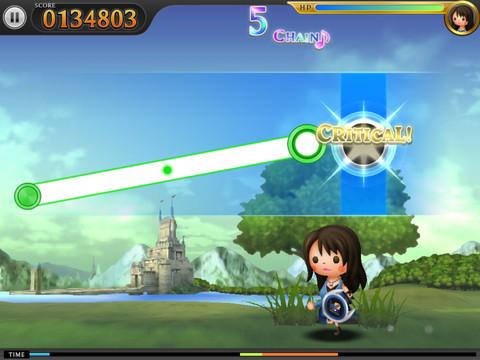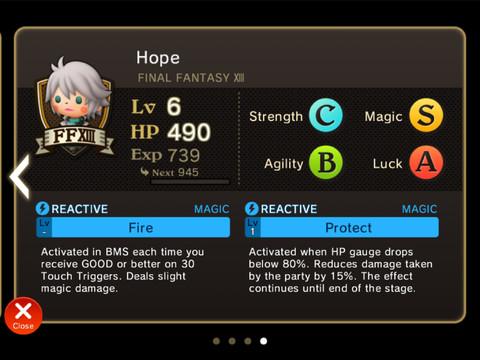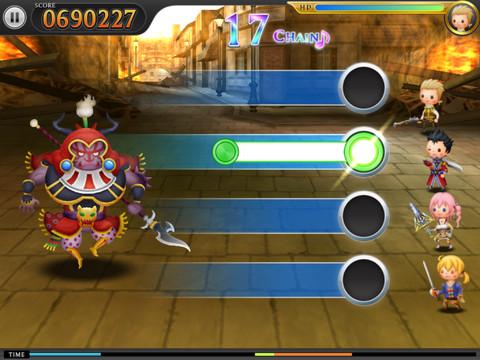- Wondering how to get Monopoly GO! free rolls? Well, you’ve come to the right place. In this guide, we provide you with a bunch of tips and tricks to get some free rolls for the hit new mobile game. We’ll …
Best Roblox Horror Games to Play Right Now – Updated Weekly
By Adele Wilson
Our Best Roblox Horror Games guide features the scariest and most creative experiences to play right now on the platform!The BEST Roblox Games of The Week – Games You Need To Play!
By Sho Roberts
Our feature shares our pick for the Best Roblox Games of the week! With our feature, we guarantee you'll find something new to play!Type Soul Clan Rarity Guide – All Legendary And Common Clans Listed!
By Nathan Ball
Wondering what your odds of rolling a particular Clan are? Wonder no more, with my handy Type Soul Clan Rarity guide.
Theatrhythm Final Fantasy Review
Theatrhythm Final Fantasy‘s release on the 3DS earlier this year was the ultimate piece of fan service: players were treated to over 70 songs (56 playable) from the thirteen main (numbered) entries in the Final Fantasy series, 29 characters, and plenty of RPG-esque opportunities for advancement. With a freemium version of the game now available on iOS, mobile adventurers can enjoy most of the basic trappings of Theatrhythm—minus its soul.

Squall’s advice: “Don’t get your hopes up. You feel less pain.”
Theatrhythm Final Fantasy‘s release on the 3DS earlier this year was the ultimate piece of fan service: players were treated to over 70 songs (56 playable) from the thirteen main (numbered) entries in the Final Fantasy series, 29 characters, and plenty of RPG-esque opportunities for advancement. With a freemium version of the game now available on iOS, mobile adventurers can enjoy most of the basic trappings of Theatrhythm—minus its soul.
Both versions of Theatrhythm are centered around rhythmic music stages that require you to tap, swipe, and hold notes as they stream across the screen, timed to the beat of the Final Fantasy song you are playing. Even on the small iPhone screen, tapping with your finger instead of a stylus is comfortable and intuitive; since you can tap anywhere, your hand rarely gets in the way. Every song has three main levels of difficulty—Basic, Expert, and Ultimate—and is arranged as either a “Field Music Stage (FMS)” or “Battle Music Stage (BMS),” depending on what type of song it was in its original game. Songs that were previously played as “Event Music Stages (EMS)” in the 3DS version have been rearranged into FMS or BMS levels for the iOS port, which is ultimately an improvement: Event Stages tended to be slow, easy, and—despite their name—uneventful overall.
The two remaining stage types play true to the 3DS version: in FMS, characters wander a landscape related to the song in question (a hauntingly beautiful wasteland for “Zanarkand,” a bright and luscious forest for “The Sunleth Waterscape,” etc.) and receive experience points based on the distance traveled. In BMS, your four-character party takes on a classic Final Fantasy battle stance, attacking enemies like cactuars, bombs, and bosses like Sephiroth, doling out damage with every successful strike of a note. Each enemy defeated in BMS awards EXP to your active party.
This EXP is used to level up characters, which is greatly simplified in the iOS version. Instead of improving all stats (Strength, Magic, Agility, Luck), only max health points and new abilities (like “Magic Up” or the defensive “Brace”) are received through leveling. The abilities are also condensed: each character can have two abilities equipped (instead of four), and they are automatically assigned the newest two. Because of the simplified leveling system and lack of usable items in the iOS Theatrhythm, most of the strategy and personalization of the 3DS game has been lost.
This simplification extends throughout the iOS version, making it feel more like a basic, one-off rhythm game than a cohesive experience. The goal of collecting “Rhythmia” is gone, as are unlockable songs and characters—if you want more than the two songs and thirteen characters the game comes with, you’ll need to purchase them directly with real cash. Without abilities or items to equip, there’s no need or option to interact with your characters outside of merely selecting them for a song. The endearing bonuses of the 3DS version, like the music player, event player, and character quotes (such as Cloud’s memorable “How…do you put this on?”) are all gone, resulting in what is essentially a playable jukebox—and one that only comes with two songs built in.
This streamlined and piecemeal approach would have been more acceptable—especially considering this is a bite-sized mobile game—were the in-app purchases not over-priced and poorly organized. The iOS IAPs actually improve upon the 3DS offerings by including bundles in addition to individual songs. You can either purchase a set of four songs for $2.99, or a single song for $.99. However, the songs available in bundles cannot be purchased individually, and vice versa. If you just wanted to purchase, say, “Battle at the Big Bridge” from Final Fantasy V (one of the greatest battle hymns ever), you would have to pay $2.99 for the FFV bundle—even if you didn’t want the other three songs. Although the game comes with “One-Winged Angel” from FFVII and “Zanarkand” from FFX preloaded, even dedicated fans will get tired of playing the same two songs over and over and find themselves forced to shell out significant cash to round out their musical experience.
This is especially true thanks to the new game mode added to this version of Theatrhythm: “Quest Medley.” Quest Medley has replaced the Chaos Shrine, with a similar but harder “randomized song list” challenge. Each quest will challenge you to complete one FMs and one BMS, randomly chosen from your owned song list and with varying difficulties. The Medleys themselves are made up of multiple quest duos, which means that for a 5-quest Medley, for instance, you’ll complete a total of ten songs. These award CollectaCards—digital “trading cards” of various Final Fantasy characters—and Illusive Score fragments—harder difficulties of songs you own. Although the Quest Medley improves upon the Chaos Shrine by including downloaded songs in the playlist (it basically has to), the fact that a failed song cannot be retried seems too unforgiving for a ten song-minimum game mode in an otherwise laid-back game.
The other addition to the iOS version is the ability to compose your own scores and upload them for other players to try out. This has the potential to open up the game for nearly endless variations on songs, although the composition editor is surprisingly complex, and no community uploads are available to play just yet.
As a fan of the 3DS Theatrhythm, my feelings towards this iOS release are conflicted. Being able to try the game for free and purchase only the songs you want is a nice option for fans of a specific entry in the series. The addition of ten new songs (including some from Final Fantasy Tactics and Crystal Chronicles even), nine new characters (Celes! Auron! My heart breaks.), and the composition editor offers something fresh to all players. However, the prices for in-app purchases (those new characters and unlockable ones from the 3DS version, like Vivi, are $1.99 apiece), and lack of content in the vanilla game, sets an unreasonably pricey threshold for anyone who wants to recreate the 3DS experience—which you can’t do with just songs and characters, anyway.
If you just want to play a few songs for nostalgia’s sake, or get really, really good at tapping to “One-Winged Angel,” this should be a suitable download. But if you’d like a fleshed-out game that feels like a true tribute to the fans, you won’t find it on iOS yet.

The good

The bad
More articles...
Monopoly GO! Free Rolls – Links For Free Dice
By Glen Fox
Wondering how to get Monopoly GO! free rolls? Well, you’ve come to the right place. In this guide, we provide you with a bunch of tips and tricks to get some free rolls for the hit new mobile game. We’ll …Best Roblox Horror Games to Play Right Now – Updated Weekly
By Adele Wilson
Our Best Roblox Horror Games guide features the scariest and most creative experiences to play right now on the platform!The BEST Roblox Games of The Week – Games You Need To Play!
By Sho Roberts
Our feature shares our pick for the Best Roblox Games of the week! With our feature, we guarantee you'll find something new to play!Type Soul Clan Rarity Guide – All Legendary And Common Clans Listed!
By Nathan Ball
Wondering what your odds of rolling a particular Clan are? Wonder no more, with my handy Type Soul Clan Rarity guide.








 “
“ “
“